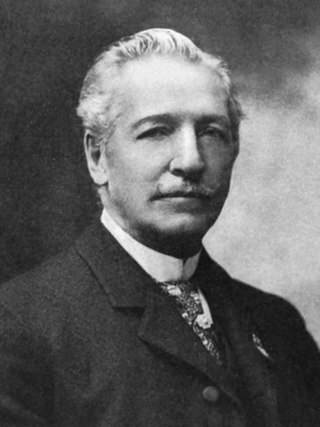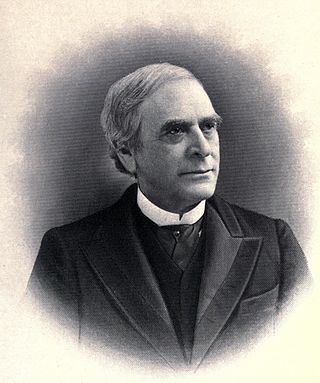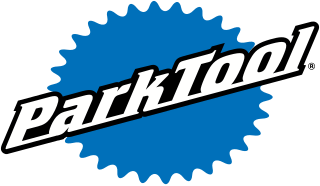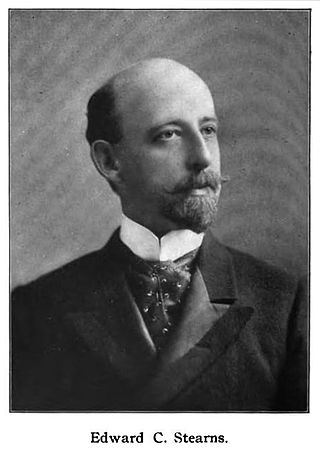George Baldwin Selden was an American patent lawyer and inventor from New York who was granted a U.S. patent for an automobile in 1895.

The Brass Era is an American term for the early period of automotive manufacturing, named for the prominent brass fittings used during this time for such features as lights and radiators. It is generally considered to encompass 1896 through 1915, a time when cars were often referred to as horseless carriages.

A snow blower or snowblower or snow thrower is a machine for removing snow from an area where it is problematic, such as a driveway, sidewalk, roadway, railroad track, ice rink, or runway. The commonly used term "snow blower" is a misnomer, as the snow is moved using an auger or impeller instead of being blown. It can use either electric power, or a gasoline or diesel engine to throw snow to another location or into a truck to be hauled away. This is in contrast with the action of snow plows, which push snow to the front or side. Typically, the snow is discharged to one side.

Albert Augustus Pope was a Brevet Lieutenant-Colonel in the Union Army. He was an importer, promoter, and manufacturer of bicycles, and a manufacturer of automobiles.

Vehicles that have two wheels and require balancing by the rider date back to the early 19th century. The first means of transport making use of two wheels arranged consecutively, and thus the archetype of the bicycle, was the German draisine dating back to 1817. The term bicycle was coined in France in the 1860s, and the descriptive title "penny farthing", used to describe an "ordinary bicycle", is a 19th-century term.

Charles Ethan Billings (1834–1920) was an American mechanical engineer, inventor, superintendent, and businessman. He held various U.S. patents on hand tools, either assigned or licensed to the firm that he and Christopher M. Spencer cofounded, the Billings & Spencer Company. His name as patent holder is stamped on countless forged hand tools, many of which survive. Billings was an expert in drop forging and was an influential leader in the American system of manufacturing and its successor systems of mass production for firearms, sewing machines, hand tools, bicycles, and other goods. He served as president of the American Society of Mechanical Engineers in 1895 and 1896. The Billings & Spencer Company was both a machine tool builder and a manufacturer of hand tools made with its machine tools.

Development of the automobile started in 1672 with the invention of the first steam-powered vehicle, which led to the creation of the first steam-powered automobile capable of human transportation, built by Nicolas-Joseph Cugnot in 1769. Inventors began to branch out at the start of the 19th century, creating the de Rivas engine, one of the first internal combustion engines, and an early electric motor. Samuel Brown later tested the first industrially applied internal combustion engine in 1826.
Pope Manufacturing Company was founded by Albert Augustus Pope around 1876 in Boston, Massachusetts, US and incorporated in Hartford, Connecticut in 1877. Manufacturing of bicycles began in 1878 in Hartford at the Weed Sewing Machine Company factory. Pope manufactured bicycles, motorcycles, and automobiles. From 1905 to 1913, Pope gradually consolidated manufacturing to the Westfield Mass plant. The main offices remained in Hartford. It ceased automobile production in 1915 and ceased motorcycle production in 1918. The company subsequently underwent a variety of changes in form, name and product lines through the intervening years. To this day, bicycles continue to be sold under the Columbia brand.
The history of the motorcycle begins in the second half of the 19th century. Motorcycles are descended from the "safety bicycle," a bicycle with front and rear wheels of the same size and a pedal crank mechanism to drive the rear wheel. Despite some early landmarks in its development, the motorcycle lacks a rigid pedigree that can be traced back to a single idea or machine. Instead, the idea seems to have occurred to numerous engineers and inventors around Europe at around the same time.

George Henry Corliss was an American mechanical engineer and inventor, who developed the Corliss steam engine, which was a great improvement over any other stationary steam engine of its time. The Corliss engine is widely considered one of the more notable engineering achievements of the 19th century. It provided a reliable, efficient source of industrial power, enabling the expansion of new factories to areas which did not readily possess reliable or abundant water power. Corliss gained international acclaim for his achievements during the late 19th century and is perhaps best known for the Centennial Engine, which was the centerpiece of the 1876 Centennial Exposition in Philadelphia.

Park Tool Company is an American designer, manufacturer and marketer of bicycle tools and equipment for both professional and home bicycle mechanics. It manufactures about 4000 products.
Edward Vassallo Hartford was the founder and President of the Hartford Suspension Company who perfected the automobile shock absorber. The middle son of A&P owner George Huntington Hartford and Marie Josephine Ludlum, Edward was the only son not involved in day-to-day operations of the food chain. However, starting in 1903, he was Secretary of the A&P corporation and along with his brothers George and John, was also one of the three trustees who controlled the company's stock after his father's death.
Upstate New York has been the setting for inventions and businesses of international significance. The abundance of water power and the advent of canal and rail transportation provided nineteenth century Upstate New York entrepreneurs with the means to power factories and send their products to market. In the twentieth century, hydroelectric power and the New York State Thruway served the same roles. In April 2021, GlobalFoundries, a company specializing in the semiconductor industry, moved its headquarters from Silicon Valley, California to its most advanced semiconductor-chip manufacturing facility in Saratoga County, New York near a section of the Adirondack Northway, in Malta, New York.

Harvey A. Moyer was born in Clay, New York, and founded the H. A. Moyer Carriage Company in Cicero, New York, in 1876. The company relocated to Syracuse, New York, in 1880 and later changed assembly to luxury automobiles in 1908 and was renamed the H. A. Moyer Automobile Company. After discontinuing production of the Moyer Car in 1915, Moyer incorporated the business, H. A. Moyer, Inc., and became a dealer for Velie automobiles and Stearns-Knight automobiles. Stearns-Knight operated for only a short time before merging with Willys-Overland. He was buried at Woodlawn Cemetery, Section 25, Plot 10
Brennan Motor Manufacturing Company (1897–1972) of Syracuse, New York, was an early manufacturer of automobile engines. From 1902 until 1908, the company produced the Brennan automobile however, after the demise of the automobile enterprise, the company again turned their focus to automobile engines and later marine engines. They were in business for 75 years when the company closed its doors in 1972.

Stearns Steam Carriage Company was a manufacturer of steam automobiles in Syracuse, New York, founded by Edward C. Stearns. Stearns built electric automobiles from 1899 to 1900 and steam cars from 1901 to 1903. The company was also known as the Stearns Automobile Company in 1903.

Edward Carl Stearns was an American entrepreneur and industrialist. He was the founder of several companies in the late 19th century in Syracuse, New York, including E. C. Stearns & Company, Stearns Automobile Company, Stearns Steam Carriage Company, Stearns Typewriter Company, and E. C. Stearns Bicycle Agency.

Clinton Edgar Woods was an electrical and mechanical engineer, inventor, manufacturer of automobiles in Chicago and New York City. He was the author of one of the first books on electric vehicles, and an early management author.

Overman Wheel Company was an early bicycle manufacturing company in Chicopee Falls, Massachusetts from 1882 to 1900. It was known for bicycles of higher quality and lower weight than other bicycles of its time. Despite a nationwide bicycle craze in the late 1800s, the company was undercut by lower-priced competition, nearly went bankrupt in 1897, and never recovered from an 1899 fire. The company was sold in 1900.



















